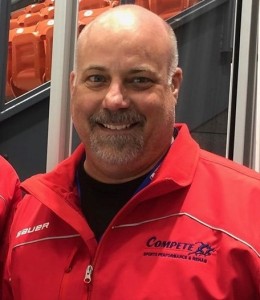From the Trainer’s Room: How ankle mobility can cause pain, limit performance in athletes
 Unless there is an injury or pain in the ankle, the joint’s function is quite often ignored.
Unless there is an injury or pain in the ankle, the joint’s function is quite often ignored.
The way the ankle moves or doesn’t move can not only affect the joint causing pain and injury, but can also limit an athletes ability to get in certain positions needed to be successful in their sport. Mobility in the joint is the ability of the joint to move through a range of motion both unloaded and loaded.
In other words, an athlete may be able to gain certain range of motion, but can they do it while jumping, landing or pushing off. These motions are important in most sports whether it is a soccer player cutting, a hockey player skating, a figure skater landing or a basketball player jumping.
There is a myth that you should never get your knees over your toes. Look at most athletes when they run, skate, cut and jump. The knee slightly or sometimes extremely goes over the toes. When performing simple movement patterns such as squats or lunges, the knees need to go slightly over the toes to engage the proper muscles to maximize performance.
There are two major muscle groups that affect ankle mobility – the soleus and the gastrocnemius. Both muscles plantarflex the ankle as in performing a calf raise. In athletics, they assist in sprinting, jumping and skating as the movement typically finishes with the push off at the ankle. The big difference between the two is that the soleus originates below the knee whereas the gastrocnemius originates above the knee.
Knowing this is important because the athlete will need to stretch the ankle with both the knee straight and the knee bent. An easy test for the soleus is to stand six inches from the wall and see if the athlete can touch their knee to the wall with the knee flexed and keeping the foot flat on the ground and facing the wall. For the gastrocnemius, place the foot behind you and flat on the ground with the athlete’s knee straight this time. See if the athlete can get their knee over their toe while maintaining a flat foot and straight knee.
These are just two simple steps that can be taken to reduce injuries and increase performance. It’s always good to work with a healthcare professional such as an athletic trainer to make sure the athlete is doing movements correctly.
Chris Phillips is an athletic trainer and strength and conditioning specialist with over 30 years’ experience in professional sports, including the NHL. Chris is a preferred provider for U.S. Figure Skating and is the owner of Compete Sports Performance and Rehab in Orange County. He can be reached through www.competeperformance.com.
(July 12, 2021)










